How to improve guitar sound pt.1
Any guitar players out there who care about their sound? We would like to share our expertise in recording and mixing guitar-driven music for over a quarter of a century. This post will dig deep deep deep on the quest for the ultimate guitar sound. During the years we have found these tips very useful after trying countless variations, therefore join us on the quest for how to improve guitar sound.
Background
I started my first rock band at the age of 9 and as the other members chose first, I was left with bass guitar. Soon I understood there just wasn’t enough strings and that I in fact wanted to be a guitar player so I upgraded from four to six strings.
There was a strong influence by Iron Maiden, Yngwie J. Malmsteen, Jason Becker, Steve Vai, Racer X, Marty Friedman and many many others. When my path collided with mr Alexi Laiho, it was cool to find we didn’t only have the exactly same brand and model guitar, but also shared a very similar taste in music and especially in guitar players. That made the communication between us pretty easy to say the least.
I am a fully self-learnt audio engineer and have never gone to any audio school to study this profession. Everything I have learnt is by trial and error. This is the best way to learn as I now know 1.000.000 ways how something does not work. Sometimes this info comes in very handy, especially when we want to create something completely out of the norm.
As an old-schooler a great guitar sound comes from the musician’s touch.
–Rami Kinnunen / Faulty Messenger
The sound of guitar
Like it is with all instruments; the source is always the most important factor. When working several years with Children Of Bodom both in studio and on the road, it was fun to hear Alexi Laiho play any guitar with any amp and he always sounded like himself. This made me realize that the touch of a musician is essential and is the biggest factor in sound.
The instrument affects the sound and Gibson for example is a lot darker compared to Stratocaster. If your touch (i.e. the sound of your fingers) is dark, maybe a dark-sounding Gibson isn’t the guitar for you. Find the instrument that suits your touch the best.
Your axe should also be easy to play, yet you can do like I did when learning to play the guitar. I had a crappy “rehearsal axe” that was very hard to play so I practised with it a lot. Once I changed to my easy-to-play main-guitar it was pure enjoyment and things sounded a lot better.
I think the key to great guitar sound is in the hands of the guitar player.
–Ivan Apikov / Jellyfish Inn
Some guitar players press strings a bit too hard sometimes making the chords detuned, so make sure to learn the right technique and choose the right strings. Thin strings are more likely to sound detuned when pressed hard. With fast solos you should try a slight palm-muting to increase accuracy like many top guitarists do. Try it and see how much it will help.
We do not recommend re-amping because too much information is lost as demonstrated on our video. Record both the amp sound and the direct signal from guitar and then re-amp using the exact settings. If spotting the difference isn’t obvious, start by comparing the pinch harmonics and how their notes along with overall control changes.
To get a violent sound out of your instrument you need to use violence to create it. Uncertain gentle stroke won’t make that happen.
–Jukka Pesu / The Rivet
Amplifier
An amp is equally important when it comes to sound and the same applies as for the instrument. If your touch is bright, a bright amp might not be the bestest choice. I personally love the sound of tube amps as they seem to deliver more than transistor and especially digital amps.
I recommend the guitarist to bring his/her amp to the session and to compare them with the ones at the studio. Rule of thumb is always to choose what sounds the best. Your ear is your best tool when it comes to sound. Presets rarely work in real life.
Describing amp eq and the amount of distortion verbally is a waste of time as those are the things for the ear to hear and not for the eyes to read. If it sounds good, it is good and if the amp sounds great in the room, that is what the sound engineer should capture. On many first album sessions the amount of distortion is usually at maximum and more albums you make, the less gain guitar players seem to use. With less gain your touch will be more essential.
Astia-studio has several guitar amps to choose from and most of them are heavily modified. We love Russian TubeTone company amp modifications. Our JCM800 has their Platinum+ mod which makes it the best sounding JCM800 I have ever heard and I’ve heard way over 100 of them.
When guitar players use different amps, the sound is much more pleasant. For years we aimed for identical sound with rhythm guitars, but not anymore. So step out of the box and use different amps. Avoid using the same amp and the same settings for all guitars on your album.
The most important factor in guitar sound comes from the touch of the guitar player. Great masters like David Gilmour, Esa Pulliainen and Alex Lifeson sound great on any guitar.
–Matti Hovi / Ghost Of Youth, Matti Hovi Collective, The Siissidös
Microphone for guitar amp
As explained on How to improve bass sound post, we have done the same microphone experiment with guitar amps. After testing various combinations of mics in front, behind and all over the guitar amp numerous times, we eventually went back using just one microphone in front of the amp.
The mic I use is a Shure SM58 with the grill removed. For some reason that seems to work best when capturing the amp as it sounds in the room. More mics on an amp, the less it sounds like in the room. Some engineers like to have options during mixing and our approach is nowadays the opposite as we like to hear the final result thruout the session with every instrument.
When mixing live shows the microphone is usually as close to the cabinet as possible. This reduces leakage from other instruments. But how about in studio? Every single studio engineer always puts the microphone close to speaker like in live situation.
When guitarist sometimes asks if that can be done at Astia too, I tell them to put their ear there first. We’d then play guitar with loud volume and they can pinpoint the exact sweetspot for the mic. No-one has agreed to do that! I usually place the guitar microphone some 40 – 60 cm (1,5 – 2 feet) away from the speaker. This way there will be a little bit of the room sound as well.
We have two acoustically different guitar booths to choose from along with the big live room. By taking the mic back guitar will sound a lot more natural. Try it and be pleasantly surprised!
The opportunity to record the whole band live on tape is one of my dearest recording experiences. After that I’ve lost interest in making demos using plugins and software thingies.
–Masi Hukari / Faulty Messenger, ex-Apulanta, ex-Amoral
Using natural reverb
Some guitar players and sound engineers told us they’d rather choose the reverb during mixing so they do not want any reverb on the recorded sound. Sure, if having a million options during mixing is your cup of pee. If the small guitar reverb is among the factors you wish to spend many hours testing dozens of variations on, then why not. Surely if you have unlimited studio time it is a way better hobby than going out on the streets to reek havoc.
I make all the decisions during recording to minimise the hassle during mixing. This will make mixing fast and we can concentrate on more important things than testing endless options for the guitar reverb. Naturally there is this new generation of people who do not want to complete anything as the endless tweaking itself is the goal and to have something completed seems to be too frightening for them…
…if you are really tired of the modern guitar sound (it is absolutely dead, baby) – Astia is the rightest way to start the process of recovery.
–Ivan Apikov / Jellyfish Inn
Processing
About processing guitar sound using eq, compression and other effects. My personal approach to guitar recording is that if I need to use any eq on mixing console during recording, I’d rather tweak the amp or move the microphone. I usually do not use any eq even during mixing when it comes to guitar. More eq you use, the worse the sound and this is 25 years of recording and mixing experience talking. The less eq on the console (or in the worst case from plugins or digital mixer) the better the sound.
I usually compress guitar on the way in a bit, depending on the genre, sound and the touch of the guitar player. There are times when no compression is needed. I don’t like to use any limiting on guitar on or on anything else. A slight touch with a hardware Drawmer 1968ME or for more attackey-sound with the legendary hardware unit 1176 will do the trick.
It’s better to test and search for your own unique sound, use time to refine it. In the hands of a skilled recording engineer a good sound will ennoble to even juicier sound.
–Matti Hovi / Ghost Of Youth, Matti Hovi Collective, The Siissidös
Clean guitar sound
For clean guitar I love how Fender tube combos sound and sometimes I’ll have two mics in front of the speaker up to 1 meter (3 feet) away for the right stereo image. I very rarely use same model mics. One might be SM57 or 58 and the other Royer121 ribbon mic. The tracks are panned hard left and hard right. If we are aiming for that extra attackey-sound I’ll have 1176 with “all-in” to get the guitar as in-your-face as possible. Please note that the hardware unit behaves very different from the plugin version, even though you read the opposite from the plugin manufacturer’s advertisement. An A/B comparison is very revealing in many areas of life.
No matter how old your strings are – isopropyl alcohol and a cloth will make old strings sound like new.
–Ivan Apikov / Jellyfish Inn
Few words about cleaning the strings as it kinda fits under this heading too. For years a mysterious detune problem tormented us as guitar sometimes was impossible to get in tune. Many times we ended up spending half a day just tuning the guitar. We now have the solution that will not only guarantee better tuning but also saves money spent on strings. Read more from our The coolest tuning tip ever post.
The biggest thing in the session was how overdubs “lock-in” and to hear it. It’s all about what you hear, not about how-much-in-grid you are. You need to catch the groove the right way.
–Rami Kinnunen / Faulty Messenger
Groove and “locking-in”
No editing can beat a guitar track played with maximum groove and musicians “locking-in” with each other. This is done by being as relaxed and with as empty mind as possible. When instruments play in sync the sound itself is much better. This is one of the reasons why I like to record a bit more takes compared to other engineers.
The magic of “locking-in” cannot be put into words.
–Juho Koski / Spell Of Torment
Learn how the drummer plays. More time you spend at rehearsal room, the tighter you’ll play and this will improve also how you sound.
You will find the groove by playing together and listening.
–Masi Hukari / Faulty Messenger, ex-Apulanta, ex-Amoral
Digital amps and amp simulators
Now comes the section that will cause most of the hate mail for this post. We do not recommend using digital amps or amp simulators unless killing the sound is your aim. Yes, the frequency response is exactly as the modelled amp, but there are more things in sound than the frequency response. Simplest way to spot the difference, and once you spot you cannot un-spot it, is to pay attention wheather the sound comes out of the speaker or not. Yes, out of the speaker.
When you play a tube amp without any digital effect pedals, the guitar sound fills the room. With digital amp, the sound stays inside the cabinet. I find this phenomena super strange yet cool! The same happens when your live show is mixed using a digital mixing console. This is one of the reasons why nearly all live shows sound pretty horrible nowadays. I have amazed local university professors demonstrating the phenomenan and they have no explanation for it!
You are more than welcome to visit us for a demonstration. This also is one of the reasons why in the rehearsal room tube guitar amps are loud enough for the drummer, yet the drummer usually cannot hear the digital amp.
Just the fact that the hypnotic computer screen was missing helped to focus more on what you hear and feel.
–Rami Kinnunen / Faulty Messenger
Recording
Back when I was recording on computer we usually had several guitar tracks on every song. Once I made the transition to tape recording it finally dawned on me why. In computer recording a lot of information is lost and therefore it is compensated by adding more tracks. Read more about our experience with Ensiferum band and how tape recording made them understand that a melody guitar recorded on tape does not need doubles, octaves etc. here.
…the most remarkable factor in guitar sound is whether it is recorded digitally on computer or analogue on tape. Tape simply sounds better also on drums, bass and everything else…
–Markus Toivonen / Ensiferum
When recording rhythm guitars it’s recommended to pan the first guitar hard left and then the other hard right. If doubling for those two is needed, you shouldn’t use the same sound. The equal amount of distortion on all four tracks will make the overall sound unreadable. Reduce distortion and all of a sudden the double will add power and not ruin the clarity of the guitars.
Go to Astia and be prepared that your first guitar recording session on tape will provide you an absolutely new level of experience and will most likely change your life!
–Ivan Apikov / Jellyfish Inn
Never track to mp3
On many sessions sent to me for mixing the groove of the instruments seemed to be next to none. It was like they had no rhythmic connection at all. So I started asking bands how they recorded their parts and the most common answer was: home. Well, that didn’t quite explain the problem so I dug in a bit deeper and found out they recorded guitars to an mp3 drum mix. Now here’s a common yet un-identified problem!
An mp3 “sways” rhythmically all the time making the recorded tracks sway as well. When you add the guitars recorded to an mp3 back to the original wav or-what-ever-your-format-is session, guitars are rhythmically off from other instruments and there very rarely is any groove left. Unless aiming for a horrible result, please do not record to mp3.
Guitar recording usually tends to get derailed to unnecessary doodling and fixing things.
–Masi Hukari / Faulty Messenger, ex-Apulanta, ex-Amoral
As explained on our Prepare for a session post, don’t play to both metronome and drums simultaneously. Have the metronome on only for the parts where drums have a pause. This will make your music sound a lot more tight. Or better yet, ditch the click and let your music breath free.
It’s difficult to put into words but it feels like tape captures more than you hear; it’s deeper and more 3D.
–Rami Kinnunen / Faulty Messenger
The importance of cables
We love to amaze guitar players too by demonstrating the difference between instrument cables. Every musician is always very suspicious about the topic and once the demonstration is done, they all request to use and buy Vovox cables. The difference is not small and it definitely is not something that only a selected few will hear. My personal goal is to change every cable in Astia-studio A to Vovox including all power cables as I know how much they improve sound. Why power cable affects the sound needs a post or two on its own.
…on our latest session it was a bit of a surprise how much the instrument cable affects the sound in a very positive way. Vovox cables turned out to be much better than expected.
–Rami Kinnunen / Faulty Messenger
Guitar players are welcome to test Vovox cables here at Astia-studio. I will be more than happy to demonstrate the difference so you too can start enjoying greatly improved sound.
Vovox was a groundbreaking experience! They change the sound to a lot brighter and clear. Like someone just lifted a blanket from covering the guitar cab!
–Masi Hukari / Faulty Messenger, ex-Apulanta, ex-Amoral
From our experience switching the instrument cable seems to improve sound the most. Speaker cable affects on high frequencies making the sound a lot more open and pleasant. Power cable improves the sound a lot, but due to its price, you should start with instrument and speaker cables.
Adding Vovox to signal chain opened the high-end in a whole new way. Sound is pleasant and easy to adjust, therefore I no longer need to adapt my playing to fix the piercing high frequencies as now I can rely on the sound and concentrate on playing.
–Jarno Junnonen / 2nd Season Band, Fixin’Janey, Bandit Queens
As we demonstrate Vovox cables and what they do to every band who comes to us, many guitar players end up replacing their cables. Once they realise the difference, there’s no going back. Great sound should be available for everyone and nowadays cables have a lot bigger effect on sound than you might think.
Big factor in guitar sound is where, with which guitar and by whom the recording is done. When recording with Anssi Kippo at Astia-studio we learned that instrument, speaker and even the power cable affect the sound. Better cable delivers better sound.
–Markus Toivonen / Ensiferum
Read more from: How to improve guitar sound pt.2
Let’s recap our tips for better guitar sound:
#1 Choose the right guitar and amp to fit both your touch and preference
#2 Tweak the amp until the sound is great. The less eq on mixing console or plugin, the better
#3 Move microphone away from the cabinet for more natural sound
#4 When recording try processing with hardware compressor on the way in. Avoid the use of plugins
#5 Do not record over an mp3
#6 Learn to “lock-in” with other instruments to improve the sound
#7 Try using a tube amp instead of digital simulation
#8 Vovox cables make much bigger improvement in sound than you could imagine
#9 Enjoy improved tuning and save money on strings using our Coolest tuning tip
To become a serious guitar player; a guitar-smith, artisan of sound – in an old fashioned way – you need to search your soul and reflect it in your playing.
–Matti Hovi / Ghost Of Youth, Matti Hovi Collective, The Siissidös
End of part one
Thank you for reading our tips on how to improve guitar sound. Your opinion might differ from ours and it is ok. Yet, we recommend testing our tips as during the years we have found them to work the best for us and for the bands we work with.
If this post was helpful, please share it on social media. This way you will help your friends to benefit from the information.
I cannot wait to reply your questions and comments so please do leave them below. To capture your guitar in great detail contact me privately by clicking here. Thank you very much and all the very best!
Astia-studio is a full analog recording studio located in eastern Finland with 25 years of experience. Bands and artists from all over the world including USA and the furthest corner of Russia, Vladivostok have arrived to us for tape recording sessions.
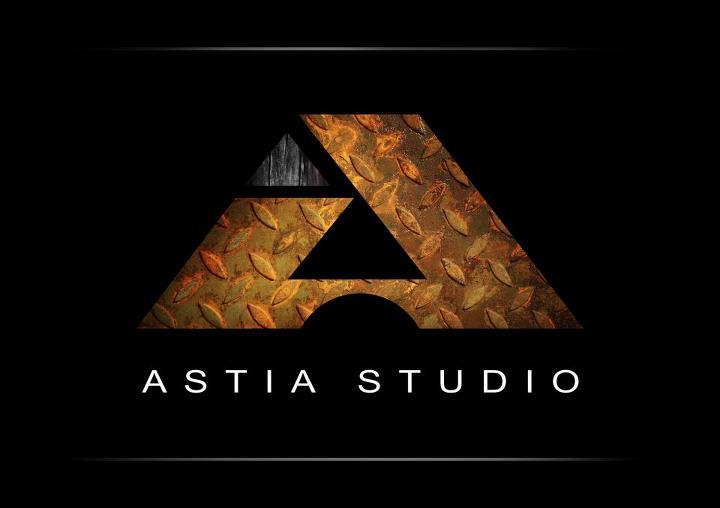

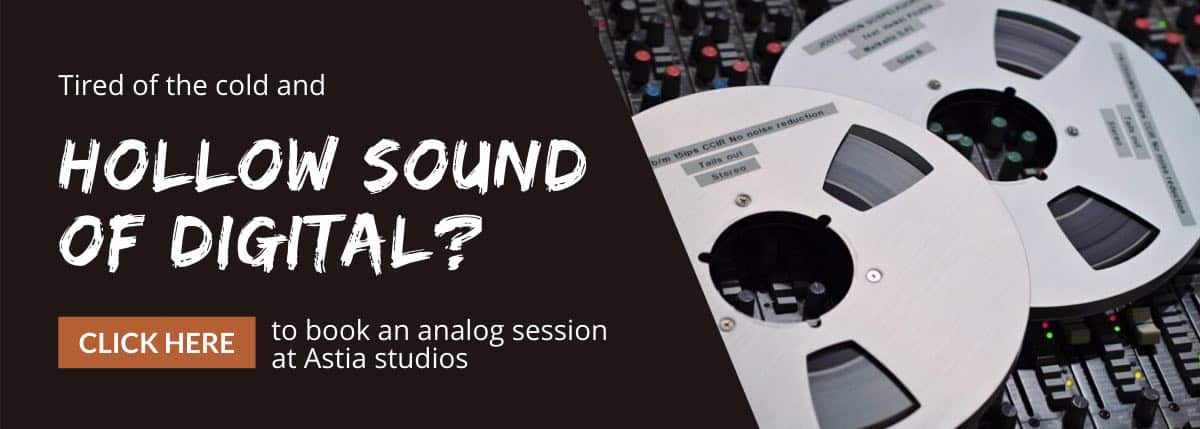
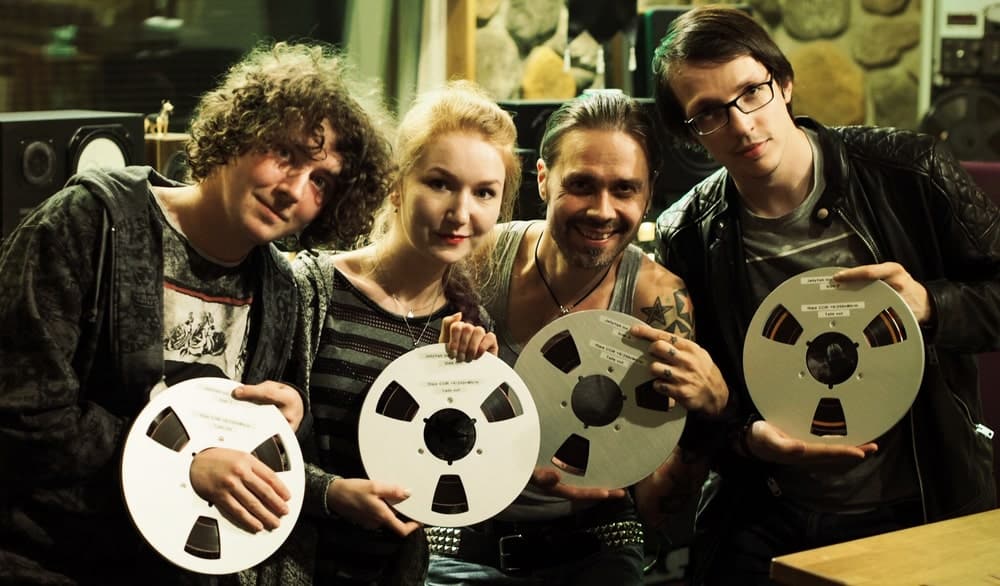
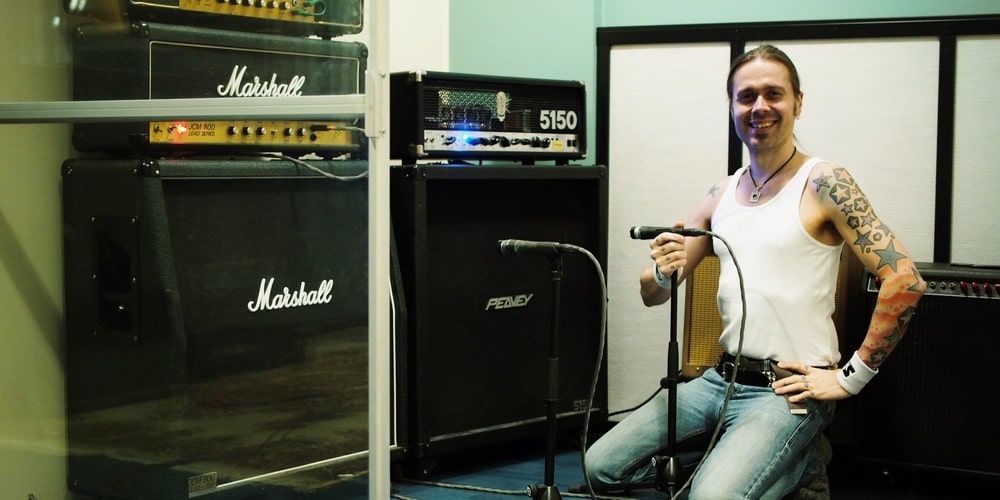


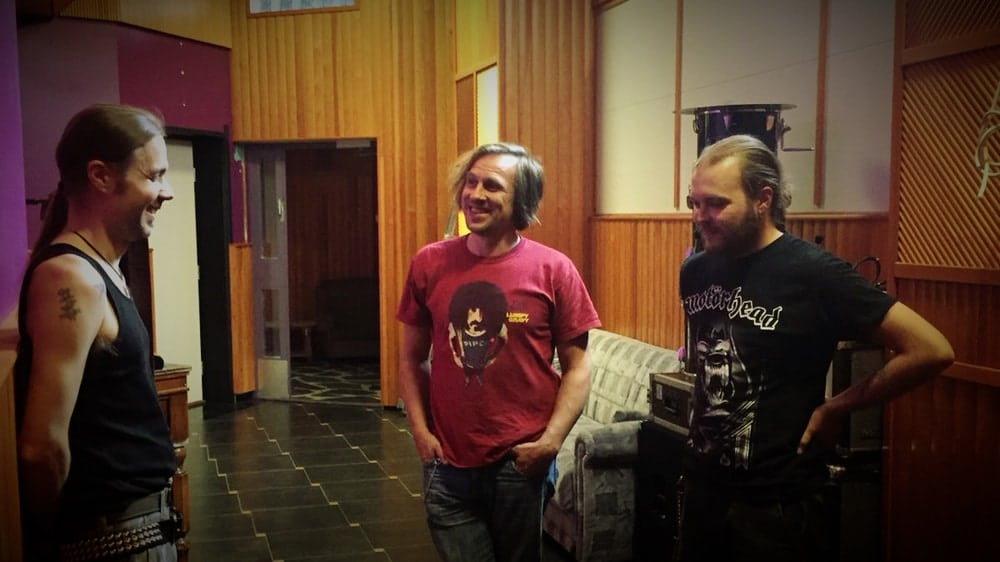

27/03/2020 @ 10:19 pm
I’ve noticed that all guitars I have are out of tune when new or old. It is frustrating especially for a person like me, whose skills are limited.I have most problems with G and B string. They are almost always out of tune. I’m pretty sure that it is due the the fact that the saddle is too high especially in Fender-type guitars,but also in others.
I’ve tried to leave G and B string a bit flat in order to get D-chord sound well, It helps D-chord,but I have then
problems with chords in upper register. Is there a good and cheap way to get the tuning in order ? I have noticed that I squeeze the neck and I bend automatically especially A-note on string G and D-note on string . Reason is that I squeeze the neck too much. Parkinson’s is the main factor,but I also played carelessly and now I have problems to play clean for example Travis picking. Do you have a good piece of advise what to do.
I have one more problem in my playing and I think that is the main problem: Cyncronizing of hands. I have never played with a pick and I’d like to try. What material could you suggest to improve playing with a pick. Also if you have material for hybrid picking, I ‘m ready to buy .
27/03/2020 @ 11:53 pm
Thank you for the comment Peter. It all sounds very familiar. Have you had your guitar intonation and truss rod adjusted by a professional? That should help, but then again if the saddle sets the strings too high, to quote the amazing Mr Jarmo Nikku: you should grind the grooves using a file (=viila). These tips combined help especially with the problems around the 2nd fret. Once the adjustments are correct, you should be able to use my Precision Tuning Tip to successfully tune your guitar. A thicker set of strings can sometimes help, but after changing to a different gauge, you should re-check both the intonation and truss rod.
I think the pick question depends on the person and his/her taste. Get several different picks from F-musiikki and choose the one you feel most comfortable.
I hope this helps. Have a great weeked, stay healthy and all the very best! ??